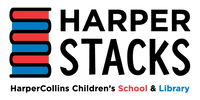Pride on Every Page: Educator Guest Post by Megan Dowd Lambert
Important Books for Inclusive Values
by Megan Dowd Lambert
I was debating what to write for this post when I received an email from Alli Harper, founder of OurShelves, a book-box subscription service and advocacy effort to leverage consumer power and demonstrate market demand for diverse children’s books—especially those that are LGBTQ+ inclusive. My first three picture books (A Crow of His Own, Charlesbridge 2015; A Kid of Their Own, Charlesbridge, 2020; and Real Sisters Pretend, Tilbury House, 2016) include queer characters, and they’ve each been OurShelves titles. Though I didn’t participate in the process of vetting my books for selection, I am part of the volunteer Curation Team that helps Alli choose high-quality titles featuring traditionally under-represented characters and families for subscribers.
Today, Alli requested feedback on possible selections for the next quarterly shipment of the “Sunshine Box” for ages 0–2. There are two other subscription age-groups (the “Rainbow Box” for ages 2–5 and the “Treehouse Box” for ages 5–8), and subscribers include families, schools, libraries, medical offices, and others who gift boxes. OurShelves is committed to including at least one book with LGBTQ+ content per box, a goal that can be difficult to meet since publishing still has lots of work to do when it comes to queer inclusivity. As I reviewed the titles Alli emailed about today, I started making a wish-list of sorts and decided to share it here.

First: Heather and her mommies need more company! For some strange reason (systemic misogyny perhaps???), there appear to be many more books available with two-dad-family depictions, even though kids with two mommies greatly outnumber those with two daddies in the real world (and that’s to say nothing of kids with one queer parent, or with nonbinary parent(s)). My picture book Real Sisters Pretend, illustrated by Nicole Tadgell, depicts two little girls and their moms, and a 2020 release, Fran Manushkin’s Plenty of Hugs, illustrated by Kate Alizadeh, is another title that fits the two-mommy-picture-book bill, but there’s plenty of room for more.
On the other hand, I’d like to see fewer books with animal characters coded as queer. This desire isn’t necessarily a knock against the penguins, bears, worms, and others in the rainbow-bookshelf’s anthropomorphic menagerie so much as it’s a call for more books for young readers that depict queer people, especially as protagonists. (I expand on this point in the cover reveal post for A Kid of Their Own, “Twice the Dads and Twice the Dad Jokes,” on Mombian: Sustenance for Lesbian Moms.) The gay human couple in my Charlesbridge picture books, Farmer Jay and Farmer Kevin, receive much of their characterization through illustrations by David Hyde Costello and Jessica Lanan, and as secondary characters, they’re in increasingly good company. A growing number of books includes queer-presenting people and diverse family constellations in group scenes or as supporting characters. Another OurShelves pick, Laurel Snyder’s Charlie & Mouse, illustrated by Emily Hughes, is one such title, with its inclusion of the eponymous characters’ neighbors, Mr. Erik and Mr. Michael, whom I read as an interracial, gay couple. Meanwhile, protagonist Mouse challenges gender norms: though text assigns him masculine pronouns, he wears a pink tutu and deely-bopper headband, unmentioned in the text. That’s something else I’d like to see more of, too: stories that center kids who transgress gender norms without making this part of their lives a point of contention in their plots. We’re big fans of Jessica Spanyol’s Clive and Rosa board books at OurShelves because they playfully do just this.

Charlie and Mouse also present as mixed-race kids with a White mom and Asian dad, and Hughes’s illustrations depict a Hawaiian setting and a multiracial cast of neighborhood characters in addition to Mr. Erik and Mr. Michael. This point brings up another item on my OurShelves wish-list: publishers, please give us more books by and about queer BIPoC. I don’t have statistics to back this up, but anecdotally, the rainbow bookshelf for young readers is pretty dang White. When I see an excellent book like When Aidan Became a Brother, written by a White trans man, Kyle Lukoff, illustrated by a Black, biracial, queer woman, Kaylani Juanita, and about a trans boy of color, I’m both excited to share it through OurShelves and sad there aren’t more like it. The problem obviously isn’t a lack of talent on the part of diverse people (including queer BIPoC), but the systemic biases and barriers that prevent them from bringing their books to the world.

At present, there simply aren’t enough LGBTQ+ books for young readers to sustain three age-levels of quarterly OurShelves subscription boxes—particularly if we want to make them inclusive of works by BIPoC authors and illustrators. Alli says our work at OurShelves and subscribers’ motivation for supporting it is driven by “inclusive values.” I like this phrase a lot, and it informs why OurShelves book boxes feature characters from a range of traditionally under-represented identities and experiences, queer and not queer, with an emphasis on elevating #OwnVoices titles (credit to author Corrine Duyvis for coining this term).


In the Sunshine Box for ages 0–2, for example, subscribers have received Robin Stevenson’s adorable, affirming board book Pride Colors, Richard Van Camp’s queer-inclusive counting book Kiss By Kiss / Ocêtôwina with its loving photos of contemporary, Indigenous people, and they also got John Steptoe’s Baby Says, recently reissued by HarperCollins. This last title depicts a pair of Black brothers in a loving sibling dynamic, and it’s one I always include in my Whole Book Approach programs because of its ingenious use of layout. (KT Horning’s 2003 Horn Book essay provides an excellent discussion of this book’s deceptively simple brilliance.)
Another HarperCollins title that recently caught my eye is Mac Barnett and Sara Jacoby’s picture book biography, The Important Thing about Margaret Wise Brown. It offers something else on my wish list—representations of queer people who aren’t defined by mommyhood or daddyhood—and I remember my breath catching the first time I read these lines of text:


“Did she ever fall in love?
Yes with a woman called Michael
and a man called Pebble.”
I read Leonard Marcus’s biography of Brown for adults, Margaret Wise Brown: Awakened by the Moon, years ago, so Barnett’s recognition of Brown’s queerness wasn’t revelatory. But, seeing that acknowledgement in a picture book was profoundly affirming to me as a bisexual woman who came out after years of denying my true self and who contends with erasure to this day. That Barnett and Jacoby’s children’s book refuses such erasure is a powerfully important thing.
Ultimately, the important thing about LGBTQ+ children’s books is that they can make queer kids and kids in queer families feel seen, affirmed, and valued. Another important thing is that they can help other readers exercise inclusive values, or grow into them. So, here’s to all the authors, illustrators, publishers, teachers, librarians, and readers who are creating and supporting these children’s books and calling for more with open hearts, hope, and pride.


Megan Dowd Lambert’s experience as a White, bisexual mother of seven children in a multiracial, adoptive, blended family informs her work as an author, reviewer, scholar, and educator in the field of children’s literature. Find her online at www.megandowdlambert, on Twitter @MDowdLambert, and on Facebook @MeganDowdLambert.





